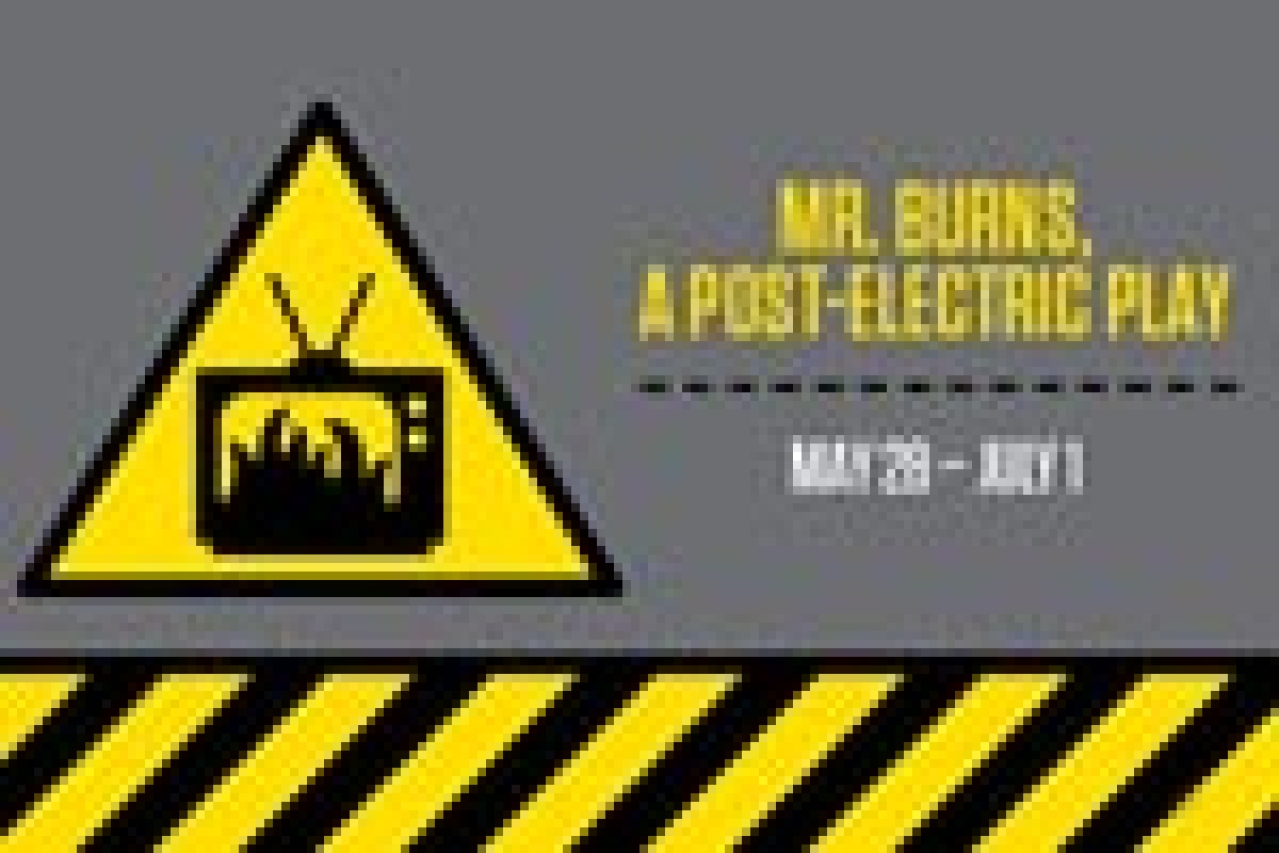SNEAK PREVIEW: Mr Burns Goes to Washington

in Mr. Burns, a post-electric play
(© Michael Bailey)
Playwright Anne Washburn’s curiosity about what society would resemble after the flu has wiped out most of the earth’s population led to her newest work, Mr. Burns, a post-electric play, opening on May 28 at the Woolly Mammoth Theatre in Washington, D.C. But, despite its serious-sounding subject matter, the work is most likely to appeal to fans of FOX’s long-running and beloved animated television program The Simpsons.
A collaboration with the popular New York-based troupe The Civilians (and helmed by artistic director Steve Cosson), the three-act play opens with the survivors of the apocalypse recalling a 1993 Simpsons episode called “Cape Feare” — a parody of the 1962 film Cape Fear and its 1991 remake — in which the Simpson family is forced to join the Witness Protection Program and live on a houseboat after Sideshow Bob, Bart Simpson’s arch-nemesis, is released from prison, bent on revenge.
The verbatim discussion, quoted from interviews with Civilians artists, including actors Quincy Tyler Bernstine, Maria Dizzia, and Matt Maher (whose names are used in the play but who do not act in it), didn’t stem from Washburn’s specific desire for her subjects to recount that particular episode. In fact, Washburn says deciding to use The Simpsons at all was an accident, “although it is pretty fabulous and far-ranging in terms of what it addresses.”
However, “Cape Feare” — which also alludes to suspense thrillers including Psycho and The Night of the Hunter, as well as Gilbert and Sullivan’s The Mikado and HMS Pinafore — was the episode that the actors could recall best, and the one that happened to be the most in-keeping with the theme of the play. “It’s so much about exploring how you cope without civilization when you’re being pursued,” Washburn says. “It spoke to the kind of fear people would have after the fall of everything.”
The second act of Mr. Burns, set seven years later, finds the same group of survivors readying themselves for a live reenactment of “Cape Feare,” complete with staged commercials, and vying for audience members with rival troupes of sometimes violent fellow reenactors.
And in the third act, set 75 years in the future, the actors — now dressed in yellow face paint and four-fingered gloves to approximate the Simpson look — are now enmeshed within what Washburn calls “an institutionalized Simpsons theater that produces the Simpsons legend.” In their play-within-a-play, Sideshow Bob has been replaced by a version of Mr. Burns, the proprietor of the Springfield Nuclear Power Plant, who serves, according to Washburn, as an “amalgam of a lot of figures…but has become the [personified] fear without a name or face.”
The work also includes an original score written by Civilians resident composer Michael Friedman, best known for his work on the musical Bloody Bloody Andrew Jackson, who explored the question of what music without electricity would sound like.
“We’ve tried to make it as choral as possible,” he says. The instrumentation includes percussion, plucked instruments “and an old, out of tune piano,” along with some very unusual sounds. “Years in the future, they would have invented things, so they’d have new instruments,” he notes.
In working on the piece, Washburn ultimately realized that one of The Simpsons‘ major contributions to the cultural conversation is its rabid fandom. “No matter how you reduce the population,” she says, “you’d still have people who’d be able to recreate The Simpsons.”











